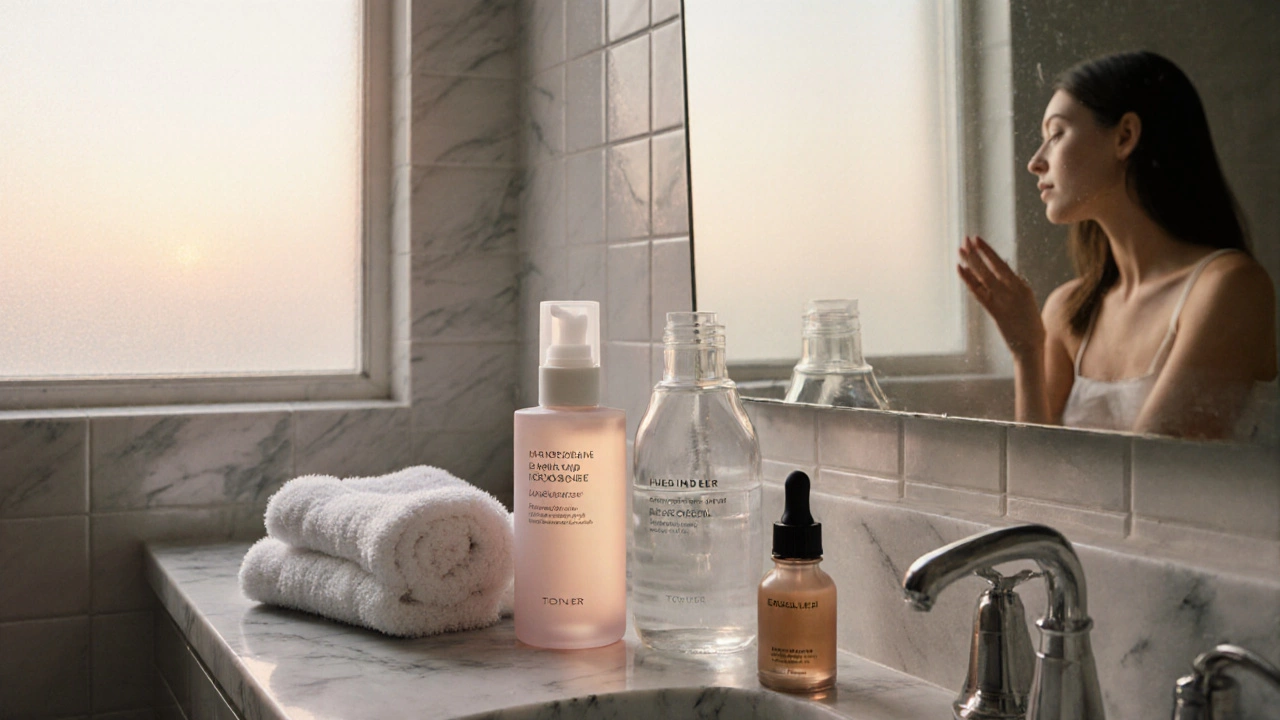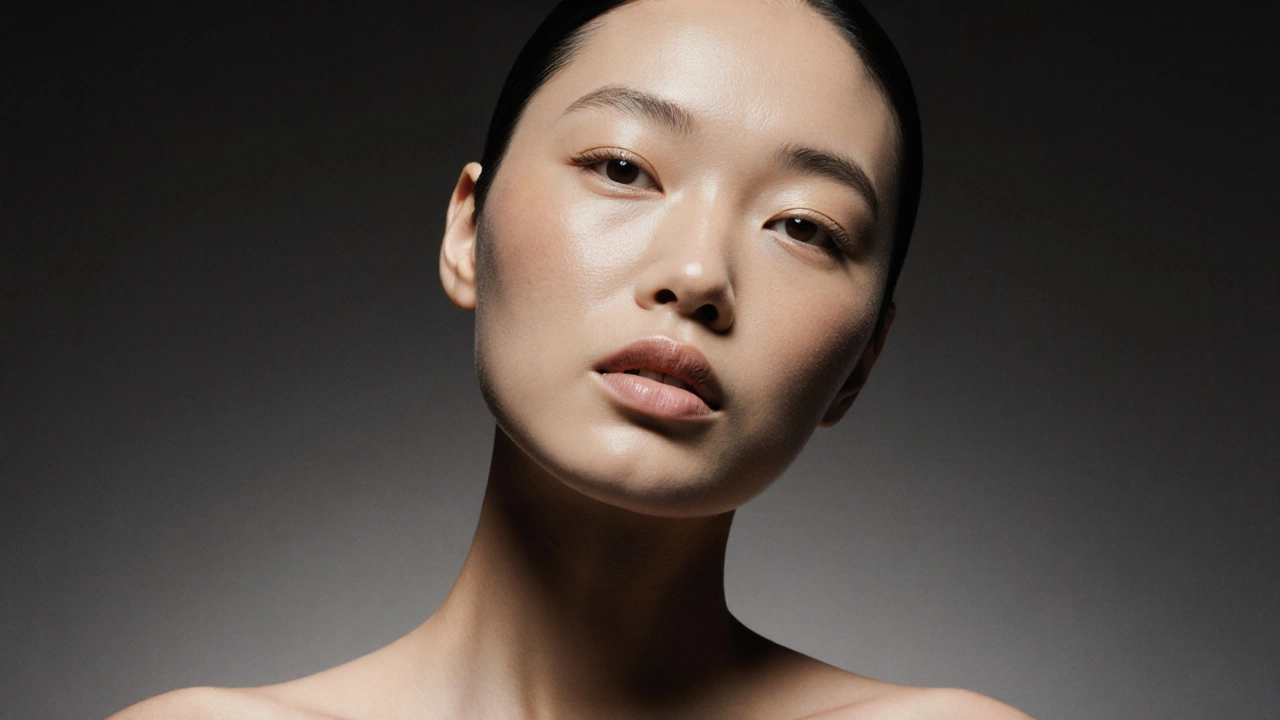Best Products to Use Before Makeup - Your Complete Pre‑Makeup Guide
 Oct, 26 2025
Oct, 26 2025
Primer Matchmaker
Find Your Perfect Primer
Answer a few quick questions to get personalized recommendations based on the latest makeup science.
Your Recommendation
Pro Tip
Let your sunscreen set for 30-60 seconds before applying primer to prevent pilling.
Ever wonder why some days your foundation looks flawless while other mornings it slides off or looks patchy? The secret usually isn’t the foundation itself - it’s what you put on first. Choosing the right pre‑makeup product can turn a flaky canvas into a smooth runway, and it doesn’t have to be complicated.
Why a Pre‑Makeup Routine Matters
Think of your skin like a photograph. If the paper is wrinkled or stained, no amount of ink will make the picture look perfect. A proper prep stage does three things:
- Creates an even, hydrated base so pigments glide on.
- Locks in moisture and protects against environmental damage.
- Extends the wear of your makeup, meaning fewer touch‑ups.
Skipping this step isn’t just about aesthetics - you’re also missing out on daily skin‑care benefits like UV protection and antioxidant boost.
The Core Steps Before You Reach for Foundation
Here’s the minimalist order that works for most skin types:
- Cleanse - remove overnight oil and pollutants.
- Tone (optional) - balance pH and prep for better absorption.
- Moisturizer is a hydrating cream or lotion that seals in water and keeps the skin barrier supple - choose a formula that matches your skin’s needs.
- Sunscreen provides broad‑spectrum protection against UVA and UVB rays, usually expressed as SPF (Sun Protection Factor) - even if you’re indoors, blue‑light and reflected UV can still cause damage.
- Serum is a concentrated treatment that targets specific concerns like brightening, anti‑aging, or oil control - apply a thin layer for extra benefits.
- Makeup primer is a specialized base that smooths texture, blurs pores, and helps makeup adhere longer - pick the type that suits your skin type and the look you want.
That’s it. You can add optional steps like eye cream or exfoliation on off‑days, but the seven points above are the foundation of a reliable prep routine.
Moisturizer: The Unsung Hero
Most people treat moisturizer as a “nice‑to‑have,” yet it’s the first barrier that prevents makeup from sinking into dry patches.
How to pick the right one:
- Dry skin: Look for richer creams with hyaluronic acid, glycerin, or ceramides. A hyaluronic acid moisturizer can hold up to 1,000 times its weight in water, giving you a plump surface.
- Oily or acne‑prone skin: Opt for lightweight, oil‑free gels or lotions that contain niacinamide to regulate sebum.
- Combination skin: A balanced, non‑comedogenic moisturizer works best - think “cream‑gel hybrids.”
Apply while your skin is still slightly damp; this locks in extra moisture and creates a smoother canvas for the layers that follow.
Sunscreen - Your Daily Defense
Even if you work from a home office, UV rays reflect off windows and cause photo‑aging. Choose a broad‑spectrum sunscreen with at least SPF 30. If you prefer a lighter feel, mineral formulas (zinc oxide, titanium dioxide) sit on top of the skin and double as a subtle primer.
Apply a pea‑sized amount for the face and blend well before any serum or primer. Let it set for a minute - this prevents pilling later on.
Serum: Targeted Boosts Without the Weight
Serums are essentially high‑concentration boosters. Here are three common types you might incorporate:
- Vitamin C serum: Antioxidant protection and brightening. Works best in the morning before sunscreen.
- Peptide serum: Stimulates collagen, great for anti‑aging.
- Salicylic acid serum: Controls breakouts and clears pores - perfect for oily skin.
Because serums are lightweight, they layer nicely under moisturizer and don’t interfere with primer adhesion.
Makeup Primer - The Star of the Show
Now that we’ve set the stage, let’s zoom in on the product the title asks about.
Makeup primer is a pre‑foundation product designed to smooth texture, blur imperfections, and improve makeup longevity. It comes in several flavors, each solving a specific problem.
Types of Primer
Below is a quick comparison to help you decide which one aligns with your skin’s needs.
| Primer Type | Key Ingredient | Best For | Finish |
|---|---|---|---|
| Silicone‑based | Dimethicone, Cyclopentasiloxane | Blurring pores, smoothing fine lines | Matte or Satin |
| Water‑based | Aloe Vera, Glycerin | Sensitive or dehydrated skin | Natural/ Dewy |
| Oil‑control | Kaolin Clay, Salicylic Acid | Oily, acne‑prone skin | Matte |
| Illuminating | Mica, Light‑diffusing pigments | Dull or uneven tone | Radiant |
| Tinted/BB‑type | Light pigments, SPF | Quick‑cover, minimal layers | Light Dewy |
How to Choose the Right One
- Dry or mature skin: Go for silicone‑based or hydrating water‑based primers that fill fine lines.
- Oily skin: Oil‑control primers with mattifying clays keep shine at bay.
- Dimensional lighting: If you’re shooting video or want a glow, choose an illuminating primer.
- Minimalist routine: Tinted BB‑type primers double as light coverage and SPF.
Application Tips
- Apply a pea‑sized dot in the center of each major facial area (forehead, cheeks, nose, chin).
- Use a fingertip or a dense brush to spread outward in gentle tapping motions. Avoid rubbing - this can disturb the underlying moisturizer.
- Allow 30-60 seconds for the primer to set before adding foundation. This prevents pilling.
Pro tip: If you’re using a heavy, full‑coverage foundation, a silicone‑based primer gives the smoothest base. For a sheer “no‑makeup” look, a water‑based primer maintains that fresh, breathable feel.
When BB/CC Creams Double as Primer
Some people skip a separate primer altogether and reach for a BB (beauty balm) or CC (color‑correcting) cream. These hybrids contain light pigments, SPF, and moisturizing agents.
They work best when you want a quick, natural finish and don’t need the extra longevity a dedicated primer offers. If you have oily skin, choose an oil‑free BB cream; for dehydrated skin, look for formulas with hyaluronic acid.

Common Mistakes and How to Fix Them
- Layering in the wrong order: Always apply lightweight products first (serum → moisturizer → sunscreen → primer). Reversing this can cause pilling.
- Using a primer that clashes with foundation texture: A matte primer with a dewy foundation can look uneven. Match the finishes.
- Skipping the waiting time: Let each layer absorb (about a minute) before moving on. Rushed application traps air bubbles.
- Over‑applying: One or two pumps of primer is enough; too much creates a cakey barrier.
Quick Pre‑Makeup Checklist
- Cleanse & tone (if you use a toner)
- Apply serum for targeted concerns
- Moisturize according to skin type
- Spread sunscreen (minimum SPF 30)
- Choose and apply the appropriate primer
- Allow each product to set before moving on
Frequently Asked Questions
Do I need a primer if I use a tinted moisturizer?
A tinted moisturizer already contains light pigments and often SPF, so it can act as a mild primer. However, if you have large pores, oily zones, or need extra wear time, adding a dedicated primer (especially a silicone‑based one) will still improve texture and longevity.
Can I apply primer over sunscreen?
Yes, primer should go on top of sunscreen. The sunscreen creates a protective barrier, and the primer adds a smooth surface for makeup. Just let the sunscreen dry for about a minute before layering primer.
What’s the difference between a silicone‑based and a water‑based primer?
Silicone‑based primers fill in fine lines and create a velvety finish, making them ideal for mature or textured skin. Water‑based primers are lighter, better for sensitive or very dry skin, and they tend to feel more breathable.
Is it okay to skip moisturizer if I have oily skin?
Even oily skin needs hydration. Look for a lightweight, oil‑free gel moisturizer. Skipping it can cause the skin to overproduce oil, leading to a greasier finish and makeup breakdown.
How long does a primer last before I need to reapply?
A good primer can keep makeup fresh for 8‑10 hours. If you’re in a hot, humid environment or have oily skin, you might need a touch‑up or a mattifying setting spray halfway through the day.
By treating your skin like a canvas and giving it the right base, you’ll notice smoother application, longer wear, and a healthier complexion over time. So next time you stare at that foundation bottle, remember: the real magic starts **before** you even swipe it on.
